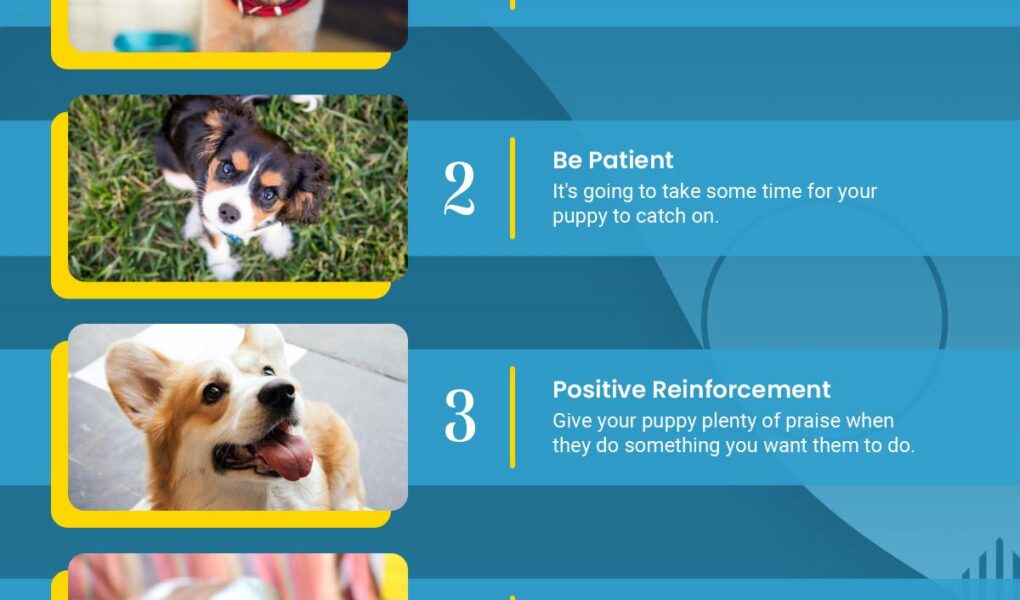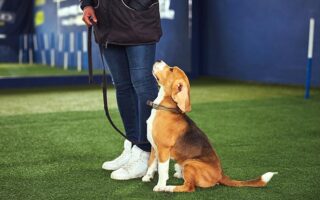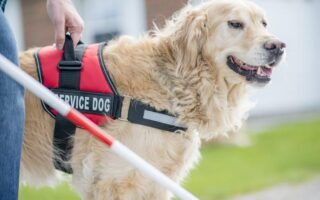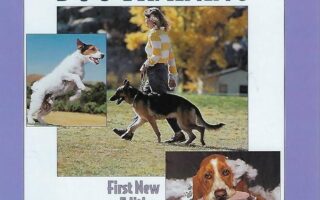Unlocking the Secrets of Puppy Training: Simple Tricks to Bond and Teach
Bringing a puppy into your home is an exhilarating journey filled with joyous barks, playful antics, and those irresistible puppy eyes. Yet, this adventure comes with the responsibility of shaping your young companion’s behavior and helping them understand the world around them. Teaching your puppy tricks isn’t just about impressing your friends; it’s an essential part of their development and the foundation for a well-behaved adult dog. In this article, we will explore effective and engaging techniques to teach your puppy a variety of fun tricks. Whether you’re looking to boost their confidence, strengthen your bond, or simply add a dash of entertainment to your routine, these tricks will serve as valuable tools in your training toolkit. So grab some treats, put on your thinking cap, and let’s dive into the world of puppy training—where learning is an adventure for both you and your furry friend!
Table of Contents
- Understanding Your Puppy’s Learning Style
- Essential Tools for Effective Training
- Fun Tricks to Engage and Challenge Your Puppy
- Building a Strong Bond Through Positive Reinforcement
- Q&A
- Insights and Conclusions
Understanding Your Puppy’s Learning Style
Every puppy is unique, and understanding your furry friend’s learning style can enhance your training sessions significantly. Some pups thrive on verbal cues, while others may respond better to visual signals. Observing your puppy’s reactions can give you vital insights into how they absorb information. For instance, if they perk up at the sound of your voice, it might indicate that verbal instructions resonate more with them. Alternatively, if they seem to follow your hand gestures closely, consider incorporating more visual cues into your training routine.
To facilitate learning, try incorporating various techniques tailored to your puppy’s preferences. Here are some strategies to consider:
- Positive Reinforcement: Reward your puppy with treats or praise when they perform the desired behavior.
- Consistency is Key: Use the same commands and cues regularly to avoid confusion.
- Short Sessions: Keep training sessions brief and focused to maintain their attention span.
- Mix It Up: Combine different learning styles, such as mixing verbal commands with hand signals, to cater to your pup’s needs.
Here’s a quick reference table to illustrate common puppy learning styles:
| Learning Style | Best Training Method |
|---|---|
| Verbal Learners | Clear vocal commands and praise |
| Visual Learners | Hand signals and demonstrations |
| Kinesthetic Learners | Physical interaction and gentle guidance |
Essential Tools for Effective Training
To ensure a productive training session with your puppy, it’s crucial to have the right tools at your disposal. Consider incorporating the following essentials to create a positive and engaging environment:
- Clicker: A clicker can help mark desired behavior precisely, making it easier for your puppy to understand what you are teaching.
- Treats: High-value treats can motivate your puppy and reinforce good behavior during training sessions.
- Leash and Collar: A sturdy leash and a comfortable collar are vital for directing your puppy while keeping them safe.
- Puppy Training Pads: These can be helpful for potty training and ensuring a clean training space.
- Chew Toys: Engaging toys can keep your puppy stimulated and occupied, reducing distractions during training.
It’s also beneficial to have a plan in place for structuring each training session. A simple table can be a helpful reference for both you and your puppy:
| Training Session | Duration | Focus Area |
|---|---|---|
| Basic Commands | 10 Minutes | Sit, Stay, Come |
| Leash Walking | 5 Minutes | Loose Leash Walk |
| Socialization | 15 Minutes | Meet Other Dogs |
| Trick Training | 10 Minutes | Shake, Roll Over |
Fun Tricks to Engage and Challenge Your Puppy
Teaching your puppy new tricks is not just a way to impress your friends; it’s also an excellent method to bond and build communication with your furry friend. Here are a few delightful tricks that can enhance your puppy’s mental stimulation and obedience:
- Spin: Encourage your puppy to twirl in a circle. Use a treat in front of their nose to guide them.
- High-Five: Once your puppy is comfortable with pawing your hand, introduce a fun “high-five” gesture to engage them.
- Play Dead: A thrilling trick where your puppy falls over and lies still, it requires practice but can be a crowd-pleaser!
- Fetch: While it’s a classic, you can add variations by teaching them to fetch specific items or put toys away.
To augment the fun and challenge, integrate some interactive games that harness their natural instinct and energy levels:
| Game | Description |
|---|---|
| Hide and Seek | Have your puppy stay while you hide, then call them to find you! |
| Treasure Hunt | Place treats around the house for your puppy to sniff out and discover. |
| Obstacle Course | Create a small course with cushions and toys; guide your puppy through it using commands. |
Building a Strong Bond Through Positive Reinforcement
Establishing a strong relationship with your puppy leads to a happier, more cooperative companion. To achieve this, focus on using positive reinforcement techniques when training them. This approach not only encourages good behavior but also strengthens the trust between you and your furry friend. When your puppy performs a desired action, such as sitting or staying, respond enthusiastically with praise and rewards. Here are some effective ways to implement positive reinforcement:
- Treats: Use small, tasty treats as immediate rewards for good behavior.
- Affection: Petting and cuddles can reinforce the bond while celebrating their achievements.
- Playtime: Incorporate a few minutes of play with their favorite toy as a reward for completing a command.
It’s important to remain consistent and patient throughout this process. Dogs thrive on routine, so establish a schedule for training sessions that includes frequent breaks to keep your puppy engaged. Consider using a simple tracking system to monitor their progress. Below is a sample table that can help you keep track of the tricks your puppy has learned, along with their corresponding rewards:
| Trick | Reward |
|---|---|
| Sit | Treat + Praise |
| Stay | Playtime |
| Come | Cuddles + Treat |
Q&A
Q&A: Tricks to Teach Your Puppy
Q1: Why should I teach my puppy tricks?
A1: Teaching your puppy tricks is not only a fun way to bond with your furry friend, but it also enhances their mental stimulation and obedience. When engaged in learning new tricks, puppies develop better focus, increased self-confidence, and strengthen their problem-solving skills, all while fostering a positive relationship with you!
Q2: What are some simple tricks to start with?
A2: Begin with fundamental tricks that are easy and quick to teach. Consider starting with ”sit,” “shake hands,” and “lie down.” These foundational commands are not only practical for everyday life but also serve as stepping stones for more advanced tricks down the line.
Q3: How do I get my puppy to learn a new trick?
A3: Begin by choosing a quiet, distraction-free environment to maximize your puppy’s focus. Use positive reinforcement techniques, such as treats or praises, to reward your puppy whenever they perform the desired action. Keep training sessions short and sweet—aim for 5 to 10 minutes at a time to maintain their enthusiasm and prevent fatigue.
Q4: What is the importance of consistency in training?
A4: Consistency is key to successful puppy training. Use the same commands and gestures every time you teach a trick. This helps your puppy associate the command with the action. Ensuring that all family members use the same cues and rewards will create a cohesive training approach, speeding up your puppy’s learning process.
Q5: Should I worry if my puppy doesn’t learn quickly?
A5: Every puppy learns at their own pace, so patience is essential. Avoid comparing your puppy to others, as individual personalities and temperaments can vary greatly. If progress stalls, consider breaking the trick into smaller steps or taking a break and returning to it fresh. Remember, training should be a joyous experience for both of you!
Q6: How do I keep my puppy motivated during training?
A6: To keep motivation high, use a variety of treats and rewards your puppy loves. Incorporate playtime and praise as part of the training sessions, and allow for breaks when they seem fatigued. Variety is also essential—experiment with different tricks to keep the training dynamic and exciting for your puppy.
Q7: Can I teach my puppy more advanced tricks right away?
A7: While it’s tempting to jump into more impressive tricks, it’s essential to ensure your puppy has a solid grasp of the basics first. Once your puppy masters simpler commands, gradually introduce more complex tricks like “roll over,” “play dead,” or even agility challenges. This progression supports confidence and helps prevent frustration.
Q8: What should I do if my puppy gets distracted during training?
A8: Distractions are a natural part of learning for puppies. To manage this, train in a quiet, low-distraction environment initially, and gradually introduce distractions as your puppy becomes more confident. If they lose focus, gently redirect them with the command you’ve been practicing, and remember to keep training sessions engaging and considerate of their attention span.
Q9: How do I ensure the training environment remains positive?
A9: A positive training environment is crucial for success. This means avoiding negative reinforcement methods, which can create anxiety and distrust. Instead, focus on encouragement and rewards for correct behaviors. Celebrate small victories, and always end training sessions on a high note to leave your puppy looking forward to the next lesson!
Q10: Can teaching tricks strengthen the bond between my puppy and me?
A10: Absolutely! Teaching tricks is a mutual learning experience that promotes trust and connection. The time spent together, the shared successes, and the joy of play create lasting memories and deepen your relationship. Plus, you’ll have a talented companion by your side to impress friends and family with newfound skills!
With these tips and insights, you’re well on your way to unlocking the potential of your playful pup. Happy training!
Insights and Conclusions
As we wrap up our adventure through the delightful world of puppy training, it’s clear that teaching your furry friend new tricks isn’t just about obedience; it’s an enriching experience that strengthens the bond between you and your pup. Remember, patience and consistency are your best allies. Whether it’s a simple sit or an impressive rollover, each trick learned is a step towards a more fulfilling companionship. So gather your treats, find a cozy spot, and embark on this joyful journey of discovery with your puppy. The rewards are not only the tricks themselves but the countless shared moments of joy, laughter, and love that will ripple through your lives for years to come. Happy training!



